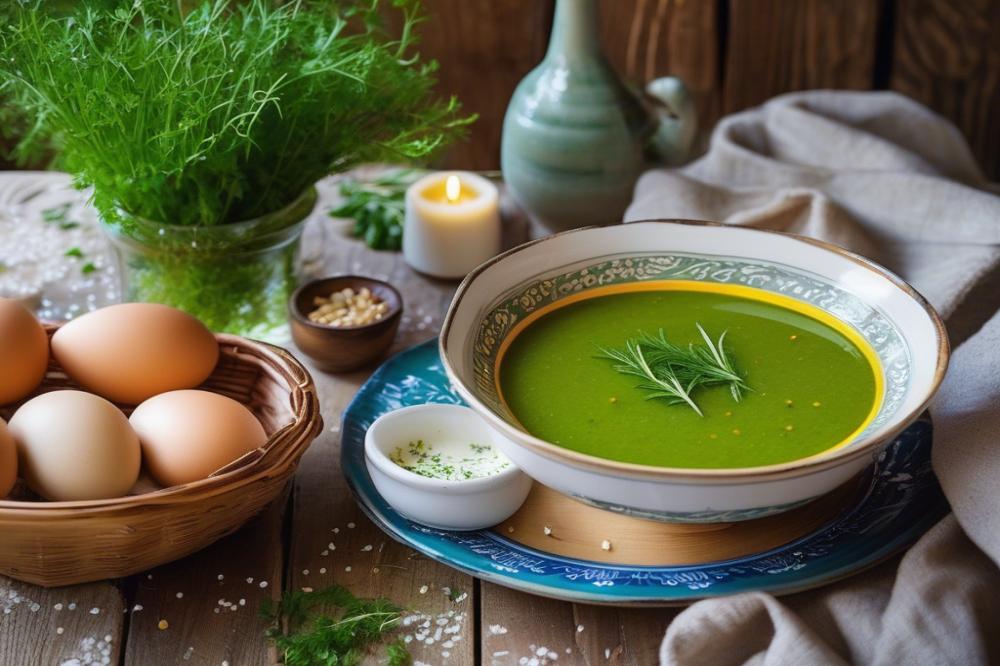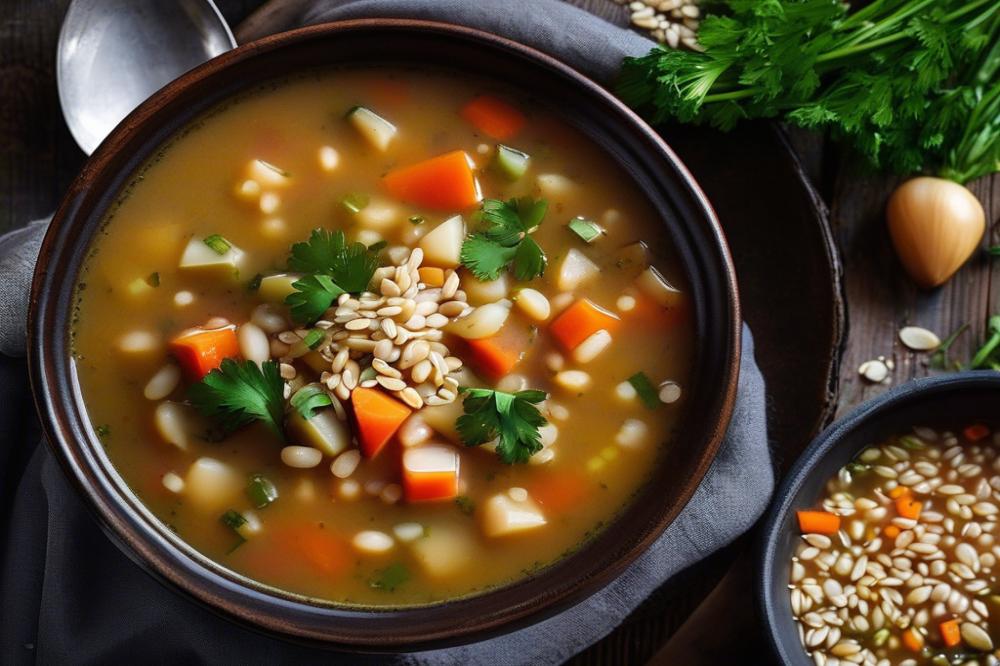Magiritsa: A Traditional Greek Easter soup
For many families in Greece, Magiritsa is not just a dish; it’s a cherished symbol of Easter celebrations. This traditional soup holds a special place within Greek cuisine, marking the conclusion of Lent and heralding the arrival of the festive season. As the sun begins to shine more brightly in spring, preparing this comforting meal brings families together in a ritual of cooking and sharing.
The significance of this soup goes beyond its delicious flavors. It represents a time of renewal and joy. Lamb, a key ingredient, serves as a reminder of sacrifice and rebirth, central themes of Easter. Fresh herbs are added to enhance both the taste and aroma, creating a delightful blend that awakens the senses. Each bowl of this traditional recipe tells a story of culture and history.
Cooking methods play an essential role in the final result. The careful preparation of the ingredients allows the flavors to meld beautifully. The simplicity of the cooking process invites participation from family members, making it a collective effort. Gastrophysics meets family bonding in the kitchen, where everyone contributes to the making of this beloved soup.
Magiritsa is more than just a festive meal; it embodies Greek traditions that have been passed down through generations. With its rich combination of flavors and textures, this Easter soup is a must-try for anyone interested in discovering authentic soup recipes from Greece. As the festive occasion approaches, let this cooking guide help you through the steps to create a dish that celebrates life, love, and togetherness during Easter.
What is Magiritsa?
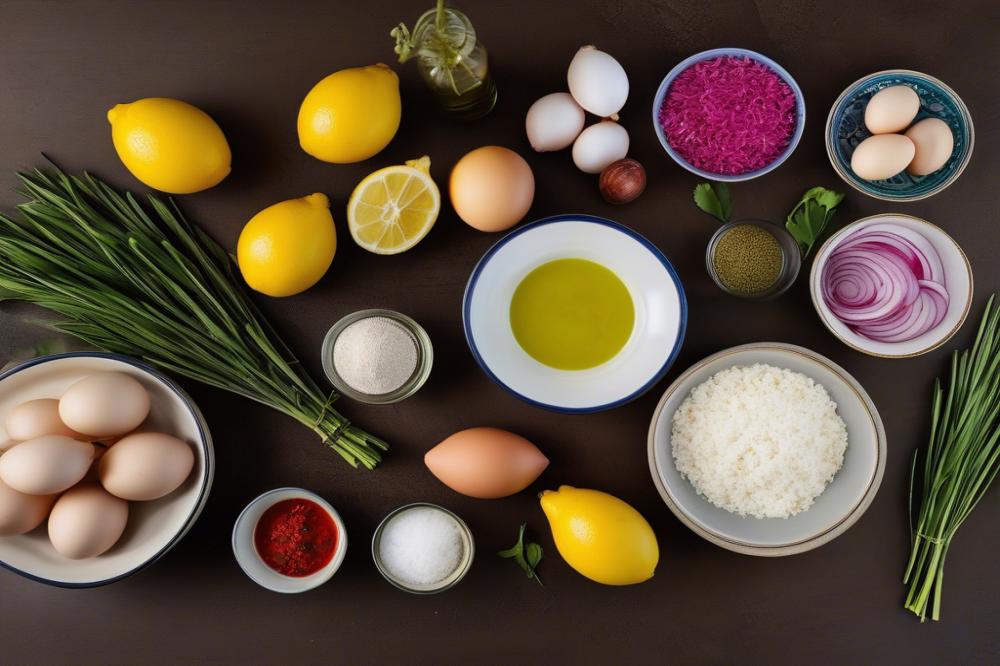

Magiritsa is a celebrated Easter soup deeply rooted in Greek traditions. This dish is more than just food; it tells the story of rebirth and renewal during the spring season. Traditionally, Greek families gather to prepare this meal as a way to break the Lenten fast. The practice symbolizes a festive meal that brings together loved ones and marks the arrival of Easter Sunday. Relying on the freshness of spring, lamb and various herbs find their way into the pot, offering vibrant flavors that are both comforting and rich in history.
Historically, this soup has its origins in ancient customs. Lamb has a dual significance: it represents sacrifice and new life. Using herbs in the recipe adds layers of flavor while also connecting to the earth’s revival after winter. Each ingredient plays a role, illustrating the balance between growth and gratitude. As families sit down to enjoy it, they celebrate more than just a meal; they acknowledge traditions passed down through generations.
Regional variations of this dish exist. In some areas, people add rice for a heartier consistency. Others might use different herbs based on local availability. Overall, each region puts its unique twist on this traditional recipe, showcasing the diversity within Greek cuisine. Over time, adaptations have emerged. Modern cooks explore new techniques while still respecting the foundational elements of the soup. Even outside Greece, the dish has gained popularity among many who want a taste of Greek culinary heritage.
As you explore various soup recipes, don’t forget the importance of herbs. Ingredients like dill and mint are often included, symbolizing freshness and warmth. This connection to spring not only enhances the flavors but also reflects cultural practices centered around nature. Each bowl brings a sense of nostalgia, echoing age-old family gatherings filled with joy and laughter. Engaging in this cooking guide allows you to participate in a cherished tradition, experiencing the love and preparation that goes into every spoonful.
Ingredients for Magiritsa
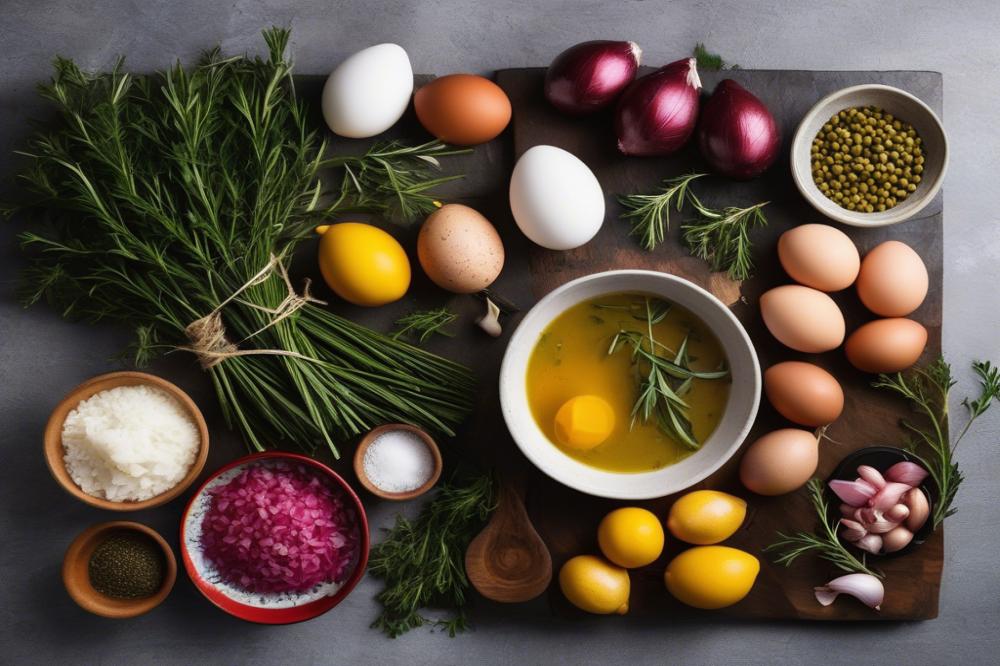

Preparing this traditional Easter soup requires several essential ingredients. Below is a list that outlines each component you will need for an authentic recipe.
- 1 kg lamb offal (liver, heart, lungs)
- 1 onion, chopped
- 1 bunch fresh dill, chopped
- 1 bunch fresh parsley, chopped
- 1 bunch green onions, chopped
- 1 liter water or broth
- 2 tablespoons olive oil
- 2 eggs
- Juice of 1 lemon
- Salt and pepper to taste
Each ingredient brings something special to this festive meal. Starting with lamb offal, this part of the meat is not only rich in flavor but also packed with nutrients. A 100-gram serving can contain about 120 calories, 5 grams of fat, and 20 grams of protein. It’s an excellent source of iron and vitamins A and B12.
Onions add depth to your dish. They contribute around 40 calories per medium onion. This ingredient offers vitamin C and antioxidants, which are key to a healthy immune system. When cooked, they become sweet, blending perfectly with the flavors of the soup.
Fresh herbs like dill, parsley, and green onions elevate the dish. Dill contains roughly 30 calories for a full bunch. This herb is known for its high vitamin C and calcium content. Parsley is also nutritious, providing vitamin K and a source of antioxidants. Green onions add a crisp, fresh bite while contributing about 10 calories for a whole bunch.
Then, there’s the broth or water, which ensures the soup has a nice base. Broth adds flavor and nutrients, depending on whether you use homemade or store-bought. Olive oil adds healthy fats, about 120 calories per two tablespoons. This oil promotes heart health and enhances flavors within the soup.
Eggs provide richness and a creamy texture. Each egg adds about 70 calories, along with protein and important nutrients like selenium and vitamin D. Lastly, the juice of a lemon adds brightness and freshness. Just one lemon yields about 12 calories, while offering vitamin C to boost your immune system.
When you blend these ingredients together, you create a uniquely delicious Greek cuisine dish that embodies the spirit of spring and reflects Greek traditions. The blend of flavors and textures in this soup recipe will surely warm your heart during the Easter celebrations, making it a perfect dish for sharing with loved ones.
Preparation and Cooking Instructions
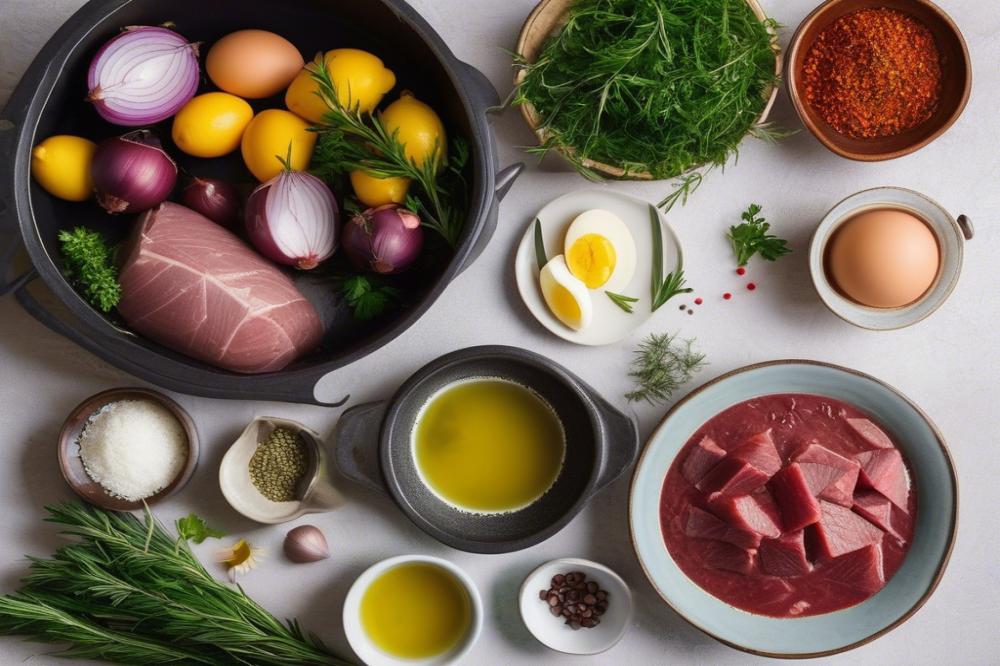

Follow this cooking guide to create a delicious traditional recipe for Easter soup. You will start with lamb offal. First, clean the offal thoroughly. This ensures the best flavor. Rinse everything well under cold water. After that, chop it into small pieces. Uniform size helps in even cooking.
Next, it’s time to sauté the onions. Use a generous amount of olive oil in a pot over medium heat. The scent of sautéing onions is a hallmark of Greek cuisine. Once the onions become soft and translucent, it’s time to add the chopped lamb offal. Stir it well. This step adds richness to your festive meal.
After the meat is browned, pour in enough water or broth to cover the ingredients. Allow the mixture to come to a gentle simmer. This simmering process lasts about 30 minutes. It blends all the flavors beautifully. Keep a close eye. You want the offal tender but not overcooked.
While the lamb and onions bubble away, prepare your herbs. Fresh dill and parsley are popular choices. Add these herbs after the broth has simmered. Their vibrant flavors remind you of spring. Season the soup with salt and pepper according to your taste. Remember, it’s about balancing the flavors.
Now, let’s move on to the egg and lemon mixture. In a separate bowl, beat a few eggs. Add the juice of one or two lemons as you whisk them. This mixture adds a unique creaminess to the soup. It also enriches the flavor profile significantly.
When the meat is tender, remove the pot from heat. Slowly temper the egg and lemon mixture by adding a ladle of the hot soup into it. This step helps prevent curdling. After mixing, gradually stir the tempered mixture back into the pot. This creates that sought-after silky texture.
Cook everything on low heat for just a few more minutes. Make sure it does not boil again. The final result should be a thick, luscious soup full of fragrant herbs and tender lamb. Each spoonful symbolizes Greek traditions around Easter. Serve hot and enjoy the unique flavors of this cherished dish.
Accompaniments and Serving Suggestions
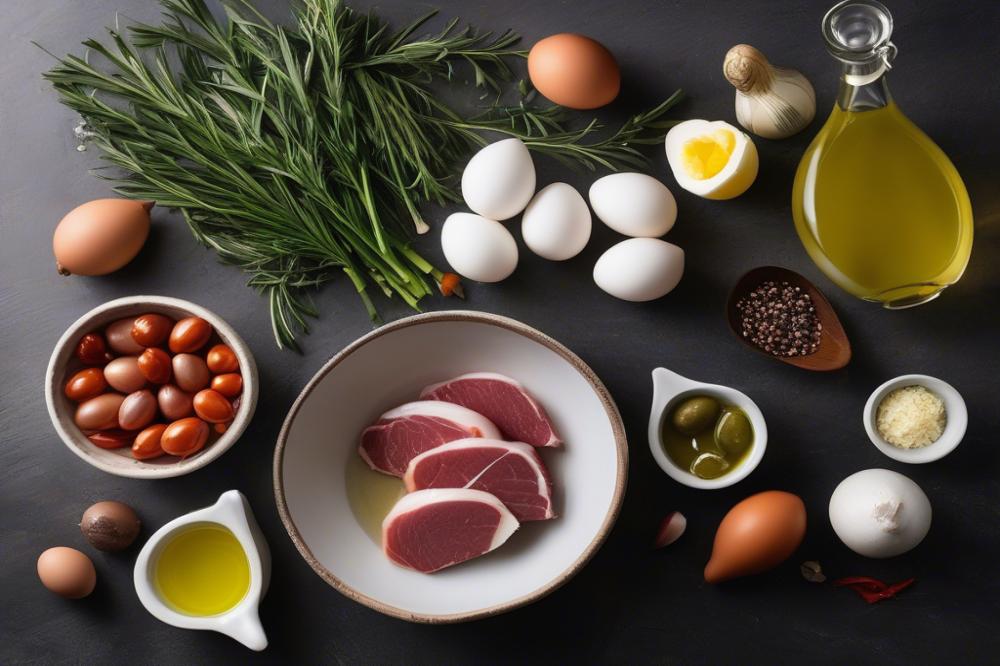

When serving the traditional Easter soup, it’s important to complement it with various accompaniments. Many families in Greece enjoy Magiritsa during their festive meals, especially after the midnight Easter service. Sharing this soup creates a warm atmosphere, perfect for gathering with loved ones.
A classic side dish that pairs beautifully with this meal is a fresh Greek salad. Made from ripe tomatoes, cucumbers, onions, and feta cheese, it offers a refreshing contrast to the rich flavors of the soup. Drizzling olive oil and a sprinkle of oregano elevates the taste, making it a delightful addition to the table.
Another popular option is a platter of spanakopita, which consists of flaky pastry filled with spinach and feta. This savory treat adds texture and flavor that complements the soup. The crispy layers provide a nice variety alongside the smoothness of the Magiritsa.
For those who prefer something lighter, a bowl of roasted vegetables can be an excellent choice. Using seasonal produce, like asparagus and artichokes, enhances the spring theme of the meal. The roasted flavors nicely balance the herbs found in the Easter soup.
When it comes to beverages, a glass of homemade lemonade is a perfect match. The bright, citrusy flavor cuts through the richness of the dish. Alternatively, many opt for a glass of red wine, as it pairs well with lamb and brings depth to the overall experience. Distinctly Greek, this tradition of enjoying wine during meals enhances the social nature of the festivities.
In Greek culture, meals often extend beyond just food. They create lasting memories. Families gather around the table, sharing stories and laughter. Preparing Magiritsa becomes more than following a simple cooking guide; it’s about celebrating togetherness. Embracing these Greek traditions during Easter reinforces the strong bonds of family and friendship.
In addition to festive meals, small bites like olives and bread can provide tasty snacks throughout the night. These simple comforts set the stage for an inviting and joyous Easter celebration. The combination of flavors, aromas, and shared moments makes the entire experience truly unforgettable.
Alternate Variations of Magiritsa
Many regions of Greece take pride in their own versions of this beloved Easter soup. Each area introduces different elements, making the dish exciting and diverse. For instance, some recipes may swap lamb for chicken, creating a lighter taste while still holding on to the spirit of the traditional recipe. This adaptation can appeal to those who enjoy a milder flavor during festive occasions.
Herbs play a crucial role in these variations. While dill and parsley are common in the classic version, other regions might incorporate local herbs like mint or coriander. These additions can enhance the dish’s aroma and provide a unique taste experience. Using fresh, seasonal herbs adds a touch of spring to the soup.
In some cases, chefs include a splash of lemon juice or vinegar to balance the richness of the meat. The acidity brightens the flavors without overshadowing them. This approach aligns perfectly with Greek traditions, where fresh ingredients are cherished. Moreover, regions near the sea might add fish or seafood for a different flair. This brings coastal influences into the Easter meal, enriching the culinary landscape.
Vegetarians looking for a substitute can find inspiration in some of these adaptations. Recipes using mushrooms or lentils can serve as an excellent base. Combining these ingredients with traditional spices still creates a delightful soup that embodies the festive spirit. This option allows everyone to enjoy the depth of flavor associated with Greek cuisine—regardless of dietary preferences.
Cooking guides that focus on regional characteristics often highlight these variations, encouraging home cooks to explore them. Embracing local ingredients showcases creativity while offering a new spin on a classic dish. Whether you’re in a bustling city or a quiet village, these adaptations make the experience of preparing the Easter soup both personal and memorable.
Families often gather to enjoy Magiritsa together, using these recipes to celebrate their heritage. Sharing stories about treasured family recipes can bring generations closer. Adapting the soup to fit personal tastes makes every festive meal a celebration of uniqueness and tradition. The variety within regional recipes reflects the rich tapestry of culture in Greece. Exploring these options can lead to discovering new favorites, expanding your palate, and enhancing your cooking adventures.
The Heart of Greek Celebration
The Easter soup represents so much more than just a dish. Celebrating Easter with this traditional recipe brings families together. It is a time when generations gather, share stories, and honor their heritage. Savoring this unique meal fosters connection and joy. Each spoonful carries the essence of Greek culture, woven into its rich flavors and textures.
Preparing this soup is not merely about the ingredients. It’s about embracing a moment steeped in tradition. The act of cooking becomes a communal experience, enriched by laughter and shared memories. Your kitchen can become a gathering place where love and festivity intertwine.
Trying your hand at making this dish allows you to participate in a beloved custom. By doing so, you celebrate not only Easter but the spirit of family bonds. Engage with these rich traditions, and you may discover a deeper appreciation for Greek culture. Whether you’re cooking solo or inviting loved ones to join, the experience can be truly rewarding.
Consider diving into this joyful culinary journey. With each ingredient, you will create a meal that warms hearts and homes. Ultimately, serving this comforting soup at your Easter table is an invitation to honor history while creating new memories. Embrace the opportunity, dive into the flavors, and experience the happiness that comes with sharing this meal.

